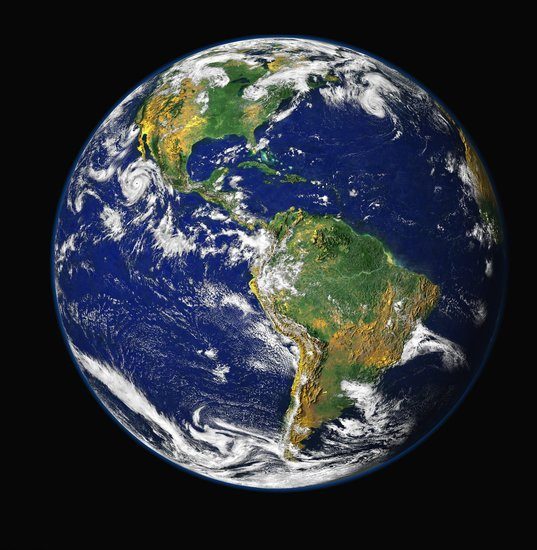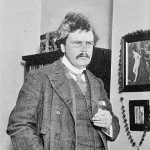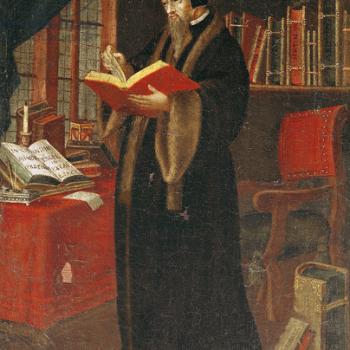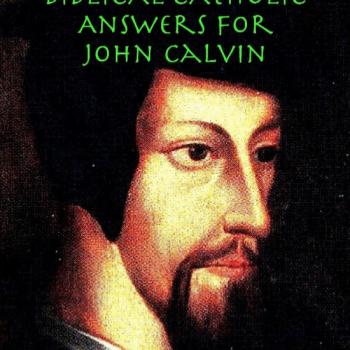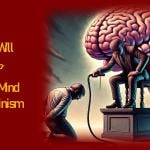***
This comes from Calvin’s Institutes of the Christian Religion (Book I, 5:11):
. . . every one appropriates to himself some peculiar error; but we are all alike in this, that we substitute monstrous fictions for the one living and true God—a disease not confined to obtuse and vulgar minds, but affecting the noblest, and those who, in other respects, are singularly acute. How lavishly in this respect have the whole body of philosophers betrayed their stupidity and want of sense? To say nothing of the others whose absurdities are of a still grosser description, how completely does Plato, the soberest and most religious of them all, lose himself in his round globe? [editor’s footnote: Plato in Timaeos. See also Cic{ero} De Nat. Deorum, lib. 1; Plut{arch} De Philos Placitis, lib. i.] What must be the case with the rest, when the leaders, who ought to have set them an example, commit such blunders, and labour under such hallucinations?
(translation by Henry Beveridge, produced for the Calvin Translation Society in 1845, from the 1559 edition in Latin [16 years after Copernicus’ death]; reprinted by William B. Eerdmans Publishing Company [Grand Rapids, Michigan], 1995, and available online at the wonderful Christian Classics Ethereal Library site)
Now, lest we doubt what Calvin was referring to by “round globe” (i.e., question whether he had in mind the spherical earth, that he rejected), this edition references Plato’s Timaeus; as does the more recent translation by Ford Lewis Battles (Philadelphia: Westminster Press, 1960). The latter also provides a more specific portion of the classic work (footnote 35 on p. 64 of Vol. I): “Timaeus 33B”.
Let’s see, then, what this section states. The following is from the famous 1871 Benjamin Jowett translation (that I also had in my own library and consulted):
And he gave to the world the figure which was suitable and also natural. Now to the animal which was to comprehend all animals, that figure was suitable which comprehends within itself all other figures. Wherefore he made the world in the form of a globe, round as from a lathe, having its extremes in every direction equidistant from the centre, the most perfect and the most like itself of all figures; for he considered that the like is infinitely fairer than the unlike.
(from the html version available online at Project Gutenberg)
In my paper, “Early Protestant Hostility Towards Science,” I documented at length how John Calvin (who outlived Copernicus by 20 years) believed in geocentrism and an earth that didn’t rotate, in the center of the universe, with everything else in the universe rotating around it. I noted that Calvin and Luther were said to have denied the sphericity of the earth, but had no hard evidence at that time (only a second hand report from a rather hostile witness). This present information appears to provide it (with regard to Calvin, at any rate).
Moreover, Calvin believed in a literal six-day creation:
For it is too violent a cavil to contend that Moses distributes the work which God perfected at once into six days, for the mere purpose of conveying instruction. Let us rather conclude that God himself took the space of six days, for the purpose of accommodating his works to the capacity of men.
(Commentary on Genesis, translated by John King [1948], p. 19; from the Crossways Classic Commentaries series, edited by Alister McGrath and J. I Packer [Wheaton, Illinois: Crossway books, 2001])
He also believed a 6,000-year-old earth:
We must not be moved by the profane jeer, that it is strange how it did not sooner occur to the Deity to create the heavens and the Earth, instead of idly allowing an infinite period to pass away, during which thousands of generations might have existed, while the present world is drawing to a close before it has completed its six thousandth year.
To be fair to Calvin and his historical context, he is not hostile to science per se, nor to the scientific method (generally speaking). He makes reference, for example, to “astonishing discoveries, and inventing so many wonderful arts” as “sure indications of the agency of God in man.” (Institutes, I, 5:5), and states: “I deny not that Astronomy has its use” (ibid.). He refers positively to “astronomy, medicine, and all the natural sciences” and writes:
To determine the connection of its parts, its symmetry and beauty, with the skill of a Galen (Lib. De Usu Partium), requires singular acuteness. (Institutes, I, 5:1-2).
Nor were great scientists even long after his time immune to quite mistaken and even silly beliefs, as I documented in my papers:
Even as late as the 1840s (with a revival in the early 20th century), scientists were defending blatant racism with the ridiculous theory of phrenology. In Calvin’s time, modern science was relatively young, so we would expect errors not only from non-scientists like himself, but also scientists. Tycho Brahe (1546-1601), for example, continued to be a geocentrist and respectable scientist (with many notable and important discoveries) 37 years after Calvin’s death, and 58 after Copernicus’ death.


